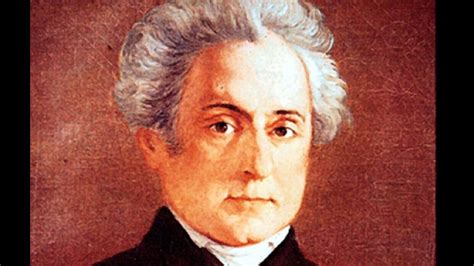Dionysios Solomos is the national poet of Greece - not only because he wrote the Greek anthem but also because he contributed to preserving earlier poetic tradition and highlighting its usefulness to modern literature.
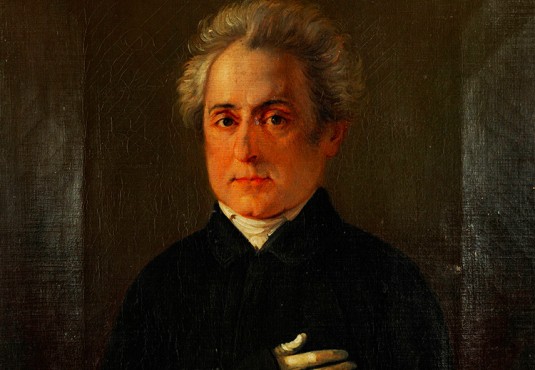
Born in Zakynthos on April 8, 1798, he was the illegitimate child of a wealthy count, Nikolaos Solomos, and his housekeeper, Angeliki Nikli.
In November 1815, Solomos enrolled at Pavia University's Faculty of Law (Italy), and graduated in 1817.
From a young, he was interested in the flourishing Italian literature and began writing poems in that language.
One of the most important first poems written in Italian during that period of time was the Ode per la prima messa (Ode to the first mass) and La distruzione di Gerusalemme (The Destruction of Jerusalem).
In 1818, he returned to Zakynthos with a solid background in literature.
Antonios Matesis (the author of Vasilikos), Georgios Tertsetis, Dionysios Tagiapieras (a physician and supporter of the dimotiki), Nikolaos Lountzis and Solomos used to gather in each other's homes and amuse themselves by making up poems.
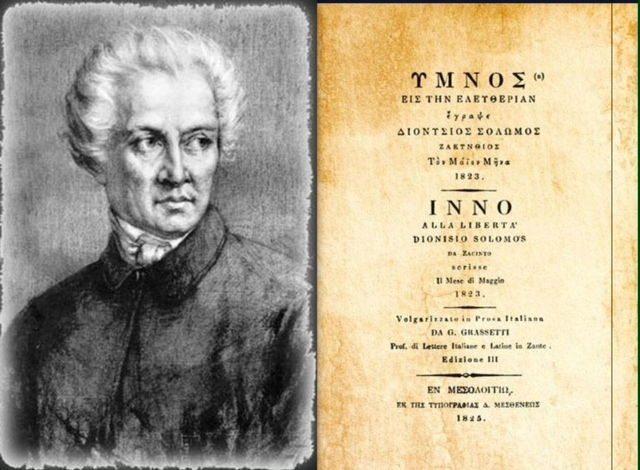
Along with the Italian poems, Solomos first attempted to write in Greek.
This was a difficult task for the young poet since his education was classical and in Italian.
At the time, there also weren't any poetic works written in the demotic dialect.
He wrote in the language of the common people of his native island.
Solomos studied demotic songs, the works of pre-solomian poets (προσολωμικοί ποιητές) and popular and Cretan literature that at that time constituted the best samples of the use of the demotic dialect in modern Greek literature.
Poems dating to that period of time are I Xanthoula — The little blond girl, I Agnoristi — The Unrecognizable, Ta dyo aderfia — The two brothers and I trelli mana — The mad mother.
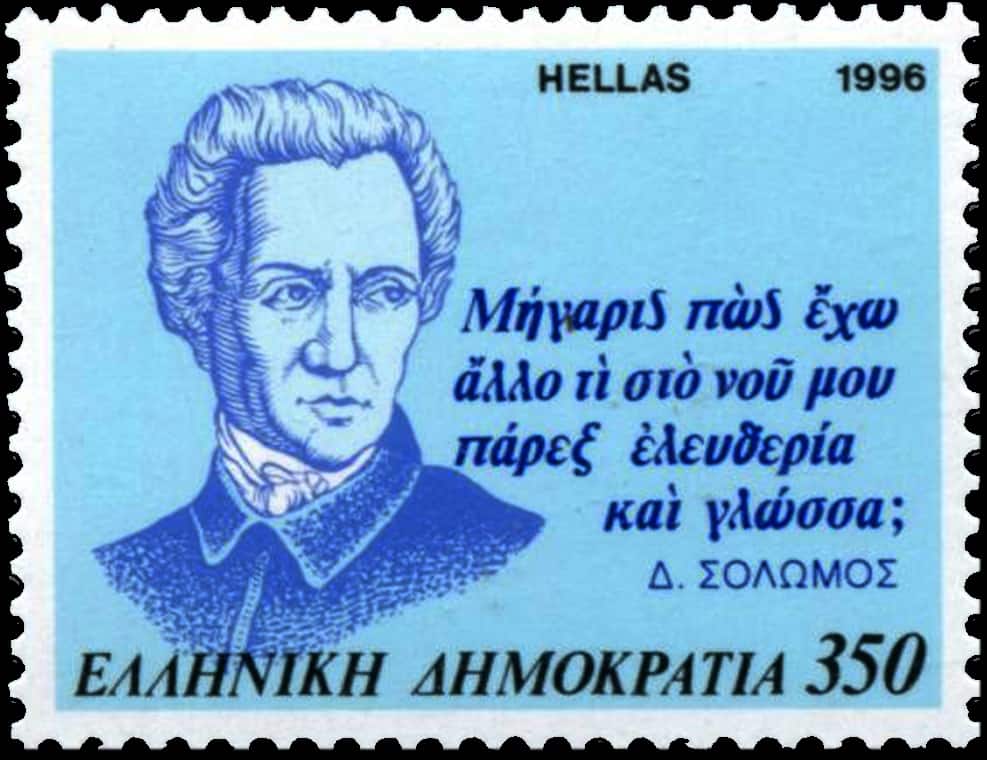
The first important turning point in the Greek works of Solomos was the 'Hymn to Liberty' that was completed in May 1823- a poem inspired by the Greek Revolution of 1821.
1833 signifies the mature period of his poetical work, which resulted in the unfinished poems of O Kritikos — The Cretan (1833), Eleftheroi Poliorkimenoi — The Free Besieged (until 1845) and O Porfyras (1847), that are considered to be the best of his works.
After 1847, Solomos started writing in Italian once more. Most works from this period are half-finished poems and prose drafts that the poet might have translated into Greek.
He passed away on February 9, 1857, from apoplexy.
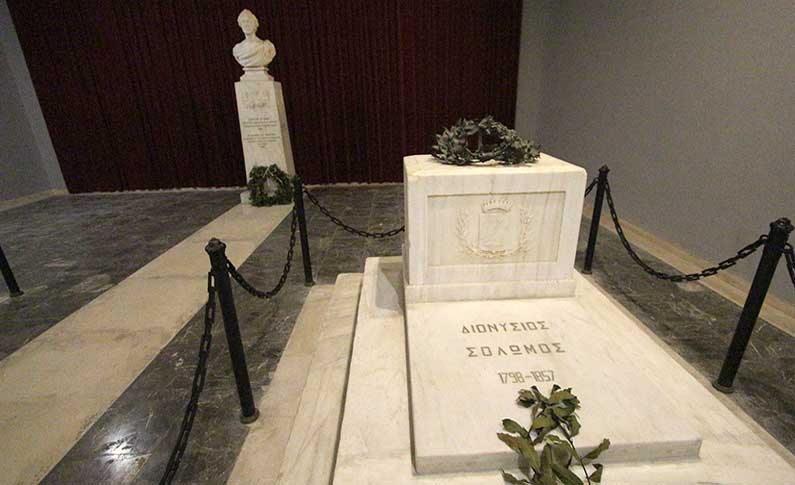
Dionysios Solomos is commonly called Greece's "national poet" for his important legacy to Greek literature and national identity.
He was depicted on the reverse of the Greek 20 drachmas coin of 1990–2001.
In 1998, a 50 drachmas commemorative coin was issued for the 200th anniversary of his birth.

The international airport on the island of Zakynthos and a square in Nicosia, Cyprus, is also named after Dionysis Solomos.
NATIONAL ANTHEM OF GREECE
The National Anthem of Greece consists of the first two verses of the poem “Hymn to Freedom” by Solomos.
A year later, it was published in Mesolonghi, and the same year Fauriel included it in a collection of Greek folk songs.
In 1828, Nicholas Mantzaros, a Corfiot musician and friend of Solomos’ set the poem to music based on a folk theme, intended for a four-voice male choir rather than preserving its character of march.
After that, the “Hymn to Freedom” was regularly heard on national holidays.
HISTORY
In 1844, the poem was once again set to music by Mantzaros and submitted to King Otto in the hope that he would accept it as the national anthem.
In spite of N. Mantzaros being awarded the Silver Cross of the Order of the Redeemer and D. Solomos being awarded the Gold Cross of the same Order, the work was not ratified as the national anthem but became popular as a battle song.
In 1861, the Minister for the Military asked Mantzaros to compose a march based on the “Hymn to Freedom”.
The musician altered the rhythm of Solomos’ hymn, giving it the rhythm of a march and in 1864, after the union of the Ionian Islands with Greece, the “Hymn to Freedom” was established as the national anthem.
The national anthem and its music were printed for the first time (27 copies) in London in 1873.
The poem “Hymn to Freedom” consists of 158 four-line verses, of which the first 24 were established as the National Anthem in 1865.
The first two of them are the ones usually played and accompany the raising and lowering of the flag. During the playing of the national anthem, one stands to attention.

